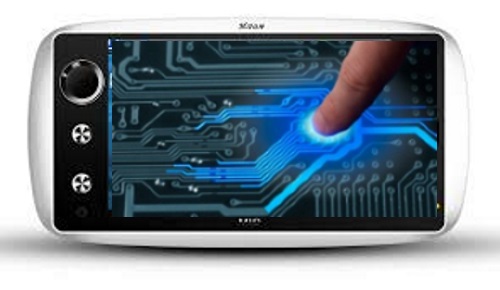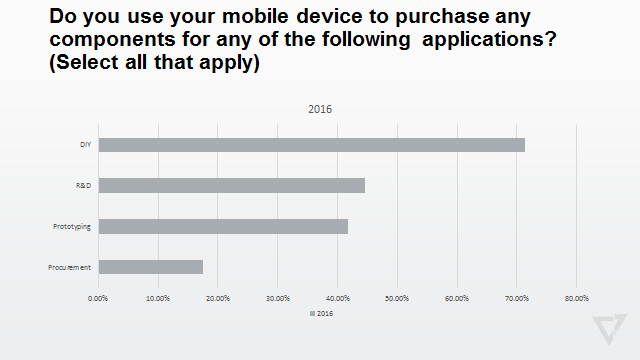By Paul O’Shea
Senior Technical Editor
Electronic Products

A very recent survey by AspenCore of mostly electrical engineers (~80%) asked participants if they used their cell phones to perform different job-related functions (as a side note, I suspect many companies supply cell phones as part of the job because it is considered a necessary tool, just like a laptop computer was 20 years ago). We are a peripatetic culture; that is, we travel about, working in various places for short periods of time. So shouldn’t our tools — the smartphone is one of them — travel with us?
Some of the tasks that engineers said they did with a smartphone, like searching for suppliers, probably wouldn’t surprise you (64.9% said they did) but what is interesting is that engineers are also looking for suppliers on their cell phones more regularly — 34% said they had in the last week and another 32.5% said they had in the last month. Since this is the first time for this survey, there is no way to know for sure if this is different from five years ago, or even 10 years ago, but perhaps we can deduce that it is more cell phone research than 5−10 years ago because the cell phone technology has made it easier with faster download speeds, faster processors, better resolution screens, and larger display sizes.
The survey took it one step further and asked what engineers looked for via a cell phone search and, no surprise, 67.39% looked for products, 47.2% looked for product price, and 45.34% viewed a datasheet. What's a little surprising was that 22.05% used their cell phone to view a product video. I guess that points out that we have the connection speed and processing power to make watching a video possible, but something is holding back more engineers from watching product videos. It could be the display size or resolution, but it could also be that there aren’t many companies with product videos to watch. Other actions, like doing a product search and checking stock volume, were done by less than 20% of the respondents and perhaps that’s a more final step before purchasing a product, which indicates that cell phones are more of a first-stage tool just for potential products.
Another interesting statistic (see figure): 41.76% said they have used a cell phone to purchase products for prototyping, and 44.51% said they used it to get products for research and development, but only 17.58% said they used a cell phone for procurement. Perhaps the most interesting response was that nearly three-fourths (71.43%) of respondents used their cell phone to purchase components for do-it-yourself projects. In the age of Indiegogo and Kickstarter, that isn’t all that surprising.

The final survey question I want to share with you asked what design work respondents thought could be done on a cell phone. Maybe there aren’t enough of/any phone apps for engineering design because 42.28% said no design work could be done on a cell phone. The design of schematics, block diagrams, research, layout, and firmware/software had many engineers thinking that they couldn’t perform design work for any of the categories on a cell phone.
Maybe all that it will take is for someone to develop an app for a general block-level design work to get the engineer thinking in the right direction. This high-level design is similar to what many of us have heard/read about when a designer drew a concept on a napkin while they were relaxing among friends, or were trying to convince an investor about an idea. This idea may not be far off because the mobile app market is a significant area of growth, having grown from $6.8B in 2010 to $25B in 2015, according to a report by TechCrunch. So it may be just a matter of time. Finally, apps are where many engineers, especially the young ones, are learning how to be more productive, and some would even say that these apps are enablers to make work more productive and, dare I say, fun. I would be very interested in your thoughts about mobile design, what’s available, and what is needed.
Advertisement





